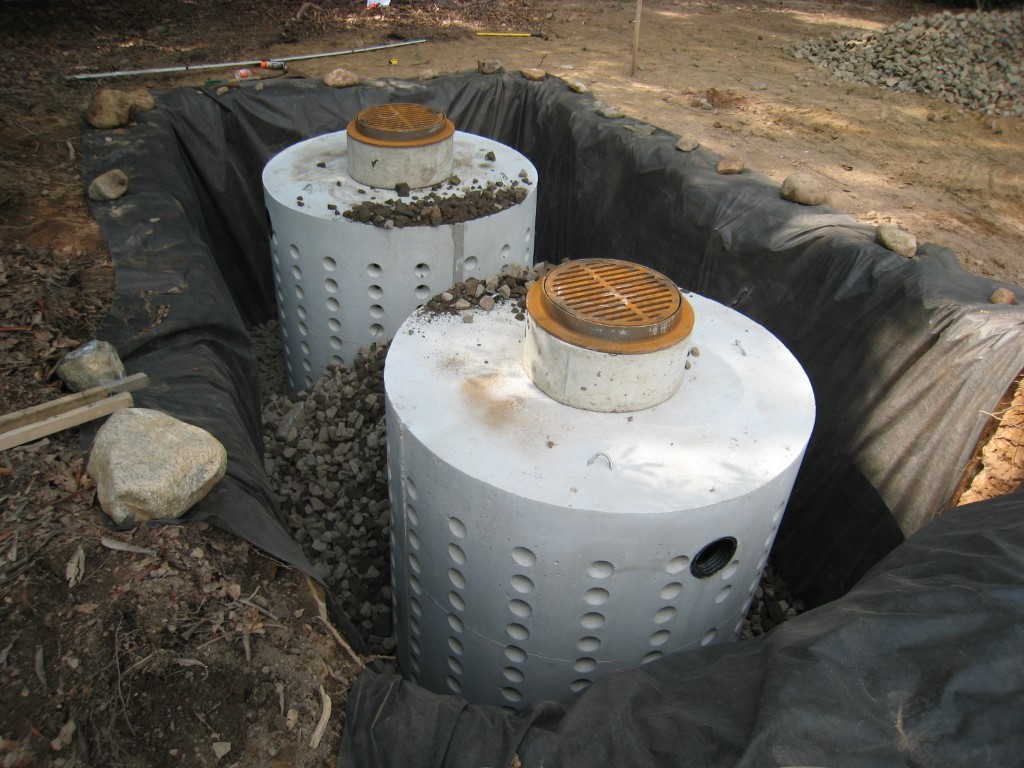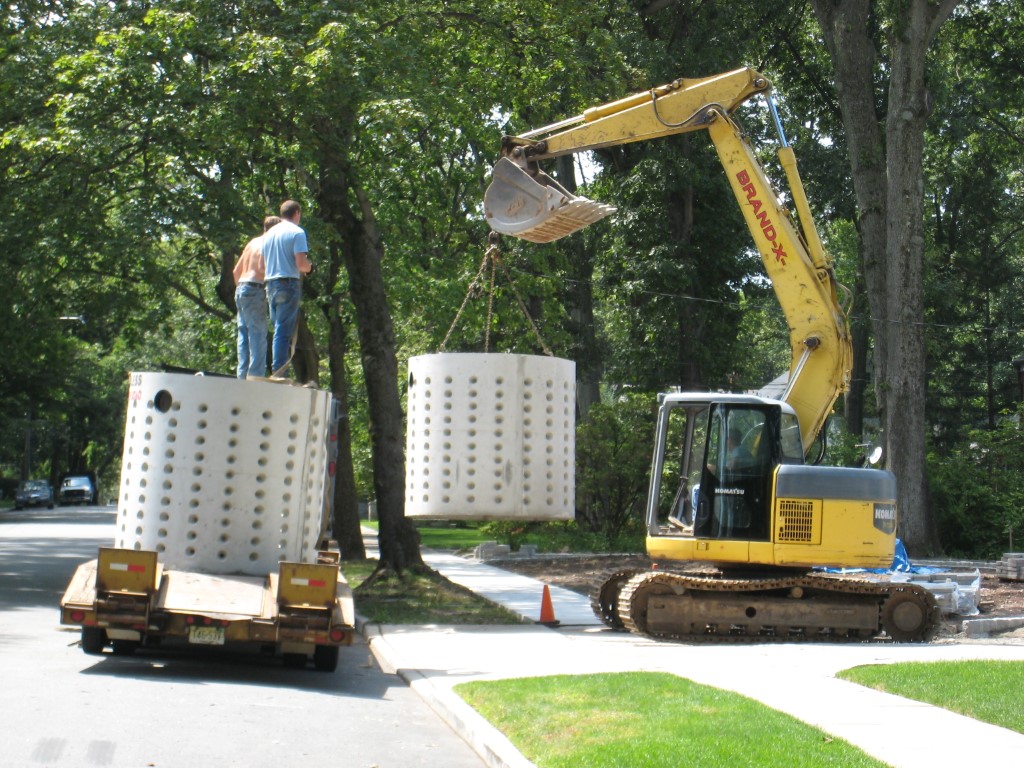The typical seepage tank is cast concrete with numerous holes through its walls to make it porous.
Regarding sizes the tanks are first referred to in terms of “gallon capacity”. For example, typical offerings are: 500, 1000, 1290 and 1500 gallon capacities.
After talking gallon capacity there can be dimensional offerings too. For instance, the popular 1000 gal. seepage tank comes in these measurements: 5′ High X 7′ Wide, 6′ High X 6.5′ Wide, and 3.5′ High X 8′ Wide.
To understand the reason for different capacity tanks, lets first understand what the seepage tank is suppose to do.
Basically the seepage tank serves as an underground reservoir for “runoff water” from surface areas such as roofs, patios, driveways, etc.
Even natural terrain like lawn areas and slopes that can generate volumes of runoff water can be designed to use the reservoir capacity of seepage tanks.
The size and capacity of the tank is calculated by the expected volume of water it will potentially have to hold.
Normally there are formulas for these different conditions and typically a civil engineer makes these calculations.

It certainly isn’t unusual to see more than one seepage tank installed in the same excavation. In these pictures you see two 1,000 gal. tanks paired together.
What will happen here is as the one tank becomes full the excess water will move to the empty tank via a PVC pipe connecting the two tanks.
The tanks are surrounded by coarse stone which easily accepts the water as it leaves the tank through the holes in the sides.
The water then filters down through the gravel and back into the earth.
As more and more towns adopt codes to manage runoff water on properties, these tanks are becoming standard fare on many projects.
With some creative thinking we’ve improvised systems like this on projects where large, concrete tanks were not necessary. In future posts we’ll look at some of these smaller systems.


Macen Kinne
hello, I am looking for a 500 gallon seepage RMG. that has been specified for a project here in Anchorage. I can send you a drawing. maybe you could send me some of your specs and see if I could get a spec deviation.
thanks
Roger
Macen,
Sorry, but I can’t help you on this topic. All of this type of work and design I outsource to civil engineering firms.
Estela Gasperi
We have 2 seepage pits, can you recommend ways of landscaping around it so it does not look unsightly. We have dirt on top of the seepage pits right now, are there any type of plants I could use that won’t affect the effectiveness of the seepage pits? Thank you in advance.
Roger
Estela,
I’m presuming the seepage pits have been installed properly and to the proper depth. In our area 2′ of soil should be on top of the tank/pit.
I also want to clarify that these are seepage tanks/pits that are installed to handle water runoff.
Unlike a leach field and other components of a septic system, a seepage tank/pit is not reliant on on the evaporation dynamics of the system and the air above it. A seepage tank/pit is designed to manage a certain amount of runoff water (within the tank area and surrounding gravel) while allowing it to percolate down into the surrounding soil.
In terms of planting on or near the seepage tanks/pits, you’ll want to avoid trees that are large growing with expansive root systems. Average sized shrubs, ornamental grasses, perennials — and certainly lawn are all OK.